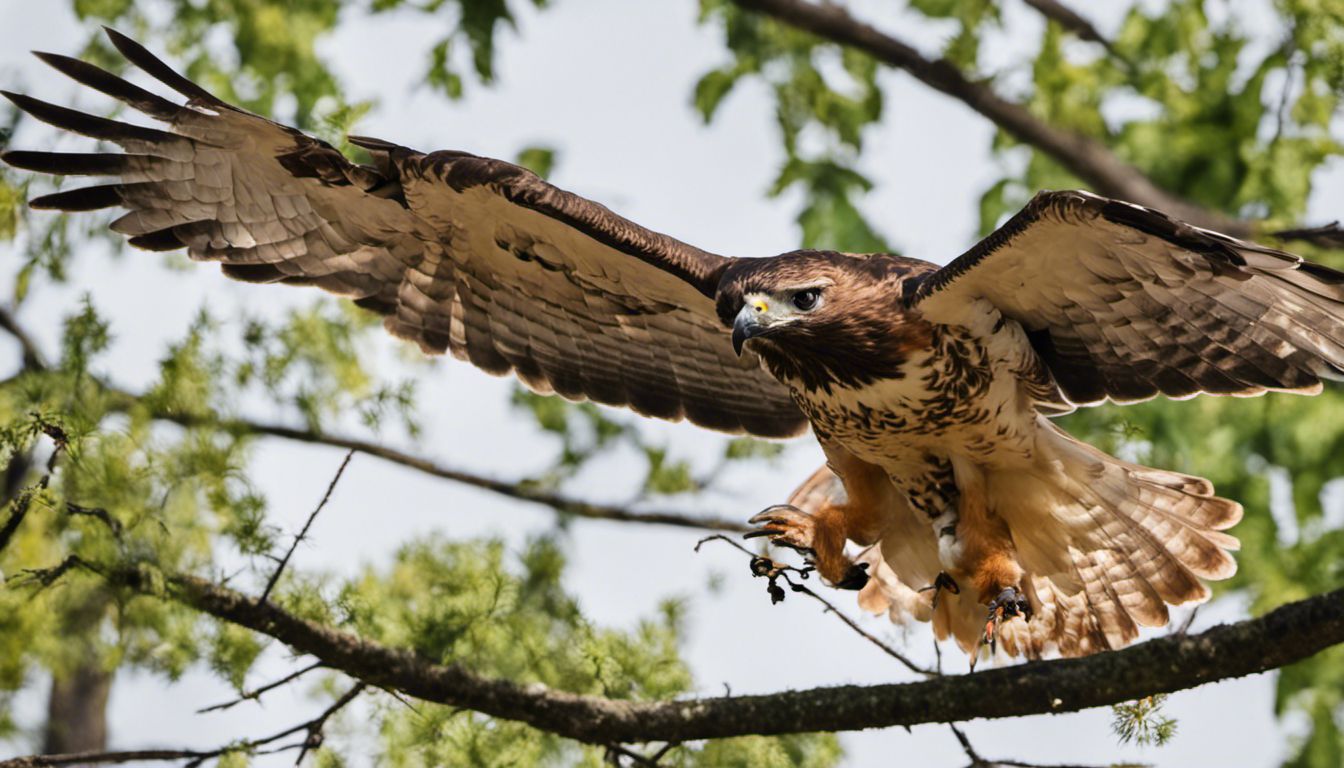To identify a juvenile red-tailed hawk, observe its plumage, which typically includes a brown-streaked belly and a lack of the red tail that adults are named for, and note its behavior and shape, which may indicate its maturity and species.
Key Takeaways:
- Plumage Characteristics: The juvenile red-tailed hawk has a brown-streaked belly and may show a banded tail but lacks the defining red tail found in adults.
- Behavioral Signs: Juveniles may exhibit less graceful flight patterns and can be seen practicing hunting techniques, differentiating them from more experienced adult red-tails.
- Morphological Details: Look for the size and shape typical of juvenile red-tailed hawks, such as broad, rounded wings and a shorter tail compared to adults.
1. Recognizing Juvenile Red-Tailed Hawk Plumage

When it comes to spotting the juvenile plumage of red-tailed hawks, there are a few distinctive features to keep an eye out for. Unlike their adult counterparts, these young birds have brown tails rather than the characteristic red, and they exhibit darker horizontal bars across their tail feathers. It’s also fascinating to note the Harlan’s subspecies, which has its unique variation in plumage that can sometimes complicate identification.
- Brown tails without the signature red coloring signify a juvenile red-tailed hawk.
- Darker horizontal bars on the tail feathers contrast with the adult’s more uniformly colored tail.
- The plumage of Harlan’s subspecies varies, so it’s important to consider this when identifying juvenile red-tails.
2. Behavioral Indicators of Juvenile Red-Tailed Hawks

Juvenile red-tailed hawks often exhibit behaviors that signal their inexperience compared to adult hawks. One of the most evident signs is their hunting practice, where they are observed learning the intricacies of capturing prey. Additionally, they tend to rely on their parents for support longer than some other birds. Even migration patterns can offer clues, as juveniles may migrate differently than mature hawks. An interesting physical feature that can aid in identifying juvenile red-tails is the color of their eyes, which change as they age.
- Watch for learning behaviors like trial and error in hunting, which indicates a juvenile status.
- Young red-tails often show a dependency on parents that diminishes as they mature.
- Variances in migration patterns can offer insights into whether a hawk is a juvenile or an adult.
- Eye color changes with age; juveniles often have lighter colored eyes.
3. Size and Shape Specifics for Juvenile Red-Tailed Hawks

The size and shape of a juvenile red-tailed hawk can provide valuable clues to its age, especially when observed in the field. While their overall silhouette resembles that of an adult, there are subtle differences in the juvenile size and wing shape. For instance, the wings of a juvenile may appear broader at the base and rounder, which can affect their silhouette in flight. These physical characteristics are key indicators and help differentiate young red-tails from their adult counterparts.
- Despite being similar in profile, a juvenile’s silhouette may show subtly different wing shapes compared to adults.
- Juvenile size is generally slightly smaller with more rounded wingtips.
- The overall shape including proportions of body, wings, and tail can hint at a hawk’s juvenile status.

